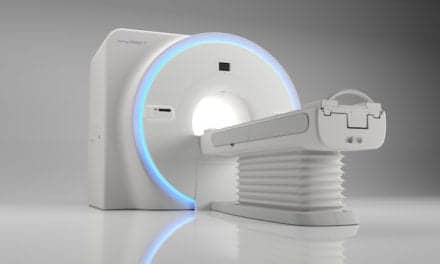Researchers at the National High Magnetic Field Laboratory (National MagLab) have discovered a substance that could help MRI machines evolve from today’s bulky behemoths to handheld scanners.
The amazing substance they discovered: water.
Funded by the National Science Foundation, a research team led by Clifford “Russ” Bowers, a chemist at the University of Florida (UF) and the National MagLab, discovered a way to turn plain old H20 into a very effective contrast agent used in magnetic resonance imaging (MRI).
Using a simple technique, Bowers’ team polarized the protons of hydrogen atoms in water, effectively boosting its magnetic properties. The resulting “hyperpolarized water” is far more sensitive to MRI detection than regular water. Their findings, published in the journal Chem, suggest the liquid could be used to create MRI images using magnets that are far cheaper and smaller than what are currently needed.
“It’s a potentially transformative result,” said Bowers.
Doctors routinely use MRI machines to diagnose diseases. The machines feature a tube-shaped superconducting magnet that generates 1.5 or 3 teslas. The machine needs that high of a field in order to work. An MRI image is, in essence, a map of water in the body: The varying amounts of H20 in a backbone, organ or tumor translate into different shades of gray in the MRI image. Like all atomic nuclei, the nuclei in hydrogen spin on an axis, a behavior that is manipulated by MRI machines to generate a signal indicating the atom’s location.
Contrast agents such as gadolinium help boost hydrogen’s signal in an MRI, increasing the contrast in the image. When done without contrast agents, MRI is not a particularly sensitive imaging method: It picks up on the body’s hydrogen in large part because there’s so much of it: Water makes up about 60% of the body.
But the type of hydrogen Bowers and his team at the MagLab’s AMRIS Facility learned to make—hyperpolarized hydrogen—is another story entirely.
The scientists discovered hyperpolarized water is relatively easy to make. They started with pure water, then added some platinum-tin nanoparticles that were synthesized in the lab of Iowa State University chemist Wenyu Huang by Raghu Maligal-Ganesh. Then they “bubbled” a special kind of hydrogen gas called parahydrogen into the liquid in much the same way you might blow air bubbles into a glass of water through a straw. The bubbling stirred up the suspension, causing the nanoparticles to spread throughout without dissolving in the water.
Whenever a parahydrogen atom floating in its little bubble bumped into one of the nanoparticles, the spin of that atom was transferred to a hydrogen atom in the adjacent water. This spin transfer, made possible by the surface properties of the catalyst nanoparticle, made the affected hydrogen atom far more sensitive to MRI.
“It’s an unbelievably simple experiment,” Bowers said. “That’s the beauty of it. The most significant discoveries are often those that are so simple and elegant.”
Because the nanoparticles settle out of the liquid, the end product of this process is simply water, albeit hyperpolarized. After testing it in one of the nuclear magnetic resonance (NMR) magnets at AMRIS, Bowers’ group confirmed it responded exceptionally well to a magnetic field. They created the first MRI image using the technique, which Bowers dubbed SWAMP (which stands for “surface waters are magnetized by parahydrogen” and is a nod to UF’s mascot, the Gators). It’s one of the first time scientists have hyperpolarized water, Bowers said, and the technique is far simpler than anything previously discovered, making it far more likely to lead to practical applications.
“It’s very fast and cheap,” said Bowers. “Anybody can do it with very little equipment. You just need a special catalyst — that’s the magic.”
Because the hyperpolarized water is so sensitive to magnetic fields, it could potentially work even in relatively weak magnetic fields. It might, Bowers suggested, be used one day with a mobile MRI machine in remote areas, on the battlefield, or perhaps even in space.






